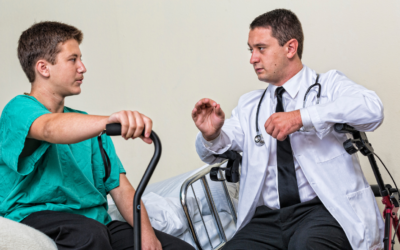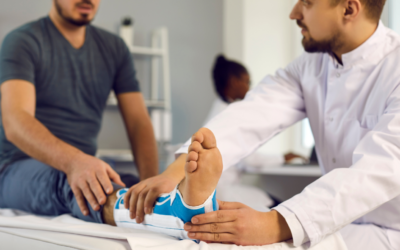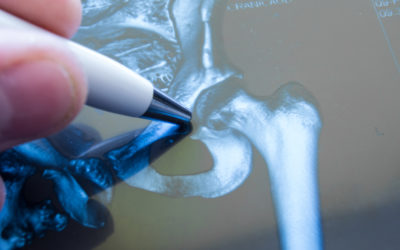Shoulder injuries are very common in young, athletic people and the aging population. There are numerous causes of shoulder pain with the two most commonly occurring in the small space between the bones of the shoulder. Irritation in this area may lead to a pinching condition called impingement syndrome, or damage to the tendons known as rotator cuff tear. These problems can exist separately, or together because it is very likely that rotator cuff repairs are the result of impingement syndrome.
The shoulder is the most mobile joint of the body with a very complex structure with different parts that work together like a machine. Each structure inside the joint such as muscles, tendons, bones, and so on give certain mobility and stability to the joint as a whole, which means every sport, activity, and work can put great demands on the shoulder, and injuries can occur when the limits of movement are exceeded or when individual structures are overloaded.
Impingement Syndrome
Shoulder impingement syndrome occurs when the tendons of the rotator cuff and the bursa are pinched in the narrow space beneath the highest point of the shoulder formed by part of the scapula, also known as the acromion. The pinching gets worse as the arm is raised away from the side of the body and impingement may develop from a minor injury, or as a result of repetitive motions that lead to inflammation of the bursa.
Differing shapes of the acromion contribute to the susceptibility of impingement syndrome. With older patients, bone spurs that form on the acromion due to arthritis, make the space beneath it smaller, creating impingement.
Three Grades of Impingement
- Grade I – Inflammation of the bursa and tendons
- Grade II – Progressive thickening and scarring of the bursa
- Grade III – Rotator cuff degeneration and tears are evident
Signs and Symptoms of Shoulder Impingement Syndrome
Most often, symptoms arise from a period of overuse. Below is a list of the many symptoms of shoulder impingement syndrome:
- Sharp, intermittent pain in early stages
- As impingement worsens, the pain becomes more achey
- Once inflammation starts, simple movements, like brushing your hair, may become painful
- Overhead movements tend to increase pain while arm movements at waist level are not painful
- The pain usually increases at night due to increased pain and swelling after a day of use, and no distractions from feeling the pain
Rotator Cuff Tear
Continuous irritation and inflammation of the bursa and rotator cuff tendons can lead to deterioration and tearing of these tendons. The muscle that forms the top of the cuff and lies in the small space beneath the acromion is subject to the most pinching and is the most commonly affected in rotator cuff tears.
A traumatic injury or deterioration seems to be the main cause of rotator cuff tears, however, in young athletes, high-energy injuries to the rotator cuff are associated with throwing or overhead sporting activities, such as volleyball.
Signs and Symptoms of Rotator Cuff Tear
The symptoms of this injury are very similar to that of impingement syndrome, however, a significant amount of weakness comes into play when dealing with a rotator cuff tear. The weakness will vary depending on which tendon is affected and many patients are unaware at first just how much strength is lost when they tear the rotator cuff.
How are Impingement and Rotator Cuff Tears Treated?
Treatment for either of these injuries typically starts with non-surgical options. There are many different paths your doctor may choose for you depending on the degree of your injury.
Non-Surgical Therapy Treatment for Impingement and Rotator Cuff Tear
- Strengthening of the rotator cuff tendons
- Stretching and regaining lost motion caused by pain and inflammation
- Giving the humerus a chance to be in a better position under the acromion will then reduce the compression of the bursa
- Anti-inflammatory medication, such as ibuprofen, can be used to help reduce pain and swelling
Surgical Treatment for Shoulder Impingement Syndrome
Typically, non-surgical treatments are efficient enough for the treatment of shoulder impingement syndrome, however, a small percentage of patients may be candidates for surgery after six months of consistent physical therapy has not improved symptoms.
Surgical treatment for impingement includes decompression of the acromion to help expand the space between the acromion and rotator cuff tendons. Open incisions or arthroscopic surgery may be used depending on your circumstances, however, arthroscopy seems to be the most efficient and highly effective due to its less invasive nature and recovery is quicker.
Surgical Treatment for Rotator Cuff Tear
Although not all rotator cuff tears require surgery for treatment, many young athletes seek surgery to help regain strength and motion after physical therapy. Sometimes the severity of the tear or the location plays a role in the success of physical therapy for this kind of injury. As with impingement surgery, open incision, as well as arthroscopic procedures, are available to repair the shoulder injury.
Complication rates after surgery tend to be low and risks of excessive bleeding or nerve damage are extremely low. The biggest issue people tend to experience is stiffness after surgery where physical therapy is required to help regain strength and movement.
Recovery from Shoulder Surgery
Shoulder Impingement Syndrome Recovery
Impingement rehabilitation begins almost immediately after surgery. Through physical therapy, you will do exercises to help regain shoulder motion and strength in the first week after your surgery. After about 6 weeks patients turn to an at-home exercise program after regaining most of their strength through physical therapy. The full recovery time varies per person, however, it generally takes about 6 months to return to “normal”.
Rotator Cuff Tear Recovery
Rotator cuff tear recovery after surgery is generally slower and the patients follow a closely monitored program including but not limited to:
- Therapy is controlled for the first 6 to 12 weeks while the tendons heal back to the bone
- It is important to regain full motion within 3 months after surgery
- During the first 6 weeks, there is no active use of the shoulder so the surgical repair is protected
- Once initial surgery healing is achieved, a stretching and strengthening program begins
- Full recovery can take more than 6 months, however, some people may take longer to regain their full muscle strength




